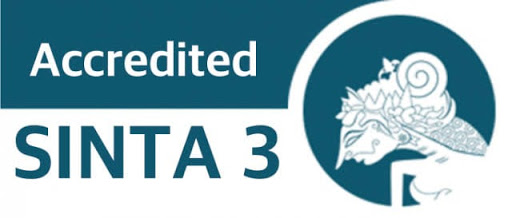ANALYSIS OF STUDENT RESPONSE TO KWLA (WHAT I ALREADY KNOW, WHAT I WANT TO KNOW, WHAT I LEARNED, AND THE AFFECT OF THE STORY) STRATEGY IN THE LEARNING READING COMPREHENSION
Abstract
This study aims to determine students' responses to learning to read narrative text comprehension using the KWLA strategy (What I Already Know, What I Want to Know, What I Learned, and The Affect of the Story). A collecting data in this study used a questionnaire in the form Unstructured questionnaires and interviews The results of the data were obtained and analyzed quantitatively qualitatively The data generated in the form of numbers were then described Based on the results of the study, it was found that aspects 1 to 5 that contained responses of students' interest in learning thus obtained by 90.4% included in the category very good.In aspects 6 to 10 which contain student responses to ease in understanding and learning the material obtained a percentage of 89.1% included in the very good category.In aspects 11 to 13 which contain student responses in the activity and courage to express opinions in the learning process a percentage of 87 is obtained , 9% in the category of very good, and aspects 14 to 15 which contain responses to the ease of students in concluding learning activities get an average percentage of 90.2% included in the very good category. This shows that the KWLA strategy is able to increase student interest in efforts to improve reading comprehension skills.
Keywords
Full Text:
PDF (Bahasa Indonesia)References
Ahuja, P dan Ahuja, G.C. (2010). Membaca Secara Efektif dan Efisien. Bandung: PT Kiblat Buku Utama.
Akbar, S. (2013). Instrumen Perangkat Pembelajaran. Bandung: PT Remaja Rosdakarya.
Arikunto, S. (2008). Penelitian Tindakan Kelas. Jakarta : Bumi Aksara.
Arikunto, S. (2008). Penelitian Tindakan Kelas. Jakarta : Bumi Aksara.
Burns, Paul C., Betty D. Roe, & Elinor P. Ross. (1982). Teaching Reading in Today’s Elementary Schools. Boston: Houghton Mifflin Company.
Dalman. (2014). Keterampilan Membaca. Jakarta: Rajawali Pers.
Harras K.A. (1995). Membaca Minat Baca Masyarakat Kita. Jurnal Mimbar Bahasa dan Seni, No.XXII.
Kridalaksana, H. (1985). Tata Bahasa Deskriptif Bahasa Indonesia: Sintaksis. Jakarta: Pusat Pembinaan den Pengembangan Bahasa.
Muhafidin. (2016). Pembelajaran Membaca Pemahaman pada Siswa Kelas V SD Negeri 1 Cidempet Kecamatan Arahan Kabupaten Indramayu. Jurnal Profesi Pendidikan Dasar , 3(1).
Tampubolon, DP. (1987). Kemampuan Membaca: Teknik Membaca Efektif dan Efisien. Bandung: Angkasa.
Tarigan, D. (1997). Kependidikan Keterampilan Berbahasa. Jakarta: Modul Universitas Terbuka.
Wiesendanger, D., Katherine. (2001). Strategies for Literacy Education. Columbus. Ohio: Merril Prentice Hall.
DOI: http://dx.doi.org/10.33578/pjr.v4i5.8070
Refbacks
- There are currently no refbacks.
Copyright (c) 2020 JURNAL PAJAR (Pendidikan dan Pengajaran)

This work is licensed under a Creative Commons Attribution-NonCommercial-ShareAlike 4.0 International License.
JURNAL PAJAR (Pendidikan dan Pengajaran)
Secretariat
Program Studi Pendidikan Guru Sekolah Dasar
Gedung B1, FKIP Universitas Riau
Kampus Bina Widya Km. 12,5 Simpang Baru Panam
Pekanbaru Riau Indonesia 28293
e-mail : pajar@ejournal.unri.ac.id



